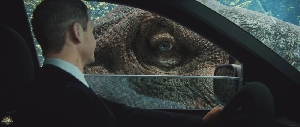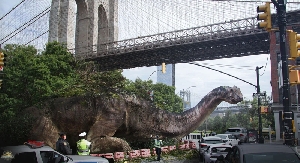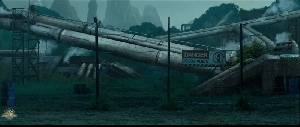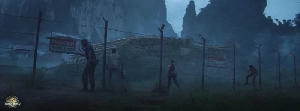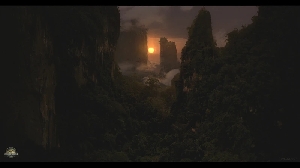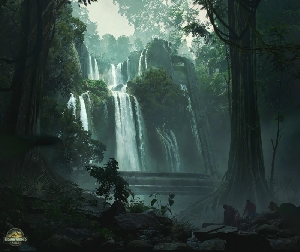Giant Kenyan Abelisaur
Dinosaurs Forum Topic
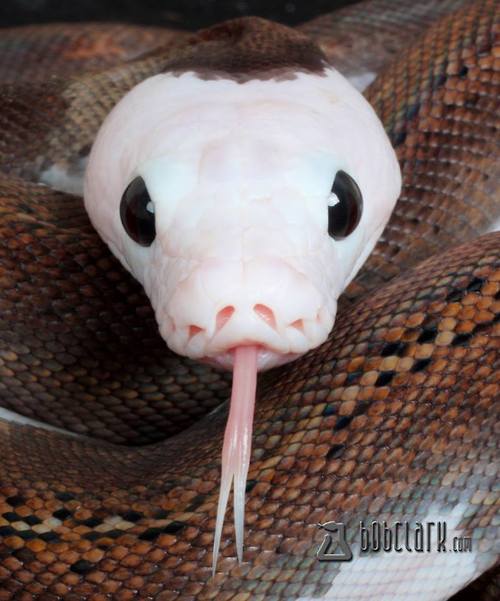
Carnosaur
MemberCompsognathusJul 31, 201411956 Views7 RepliesYou guys know him by "Titanovenator Kenyaensis" here. Well, i've been doing some digging around for this guy, and i found some interesting stuff:
A GIANT ABELISAURID THEROPOD FROM THE LATEST CRETACEOUS
OF NORTHERN TURKANA, KENYA
SERTICH, Joseph, Denver Museum of Nature & Science, Denver, CO, United States,
80205; O'CONNOR, Patrick, Ohio University, Athens, OH, United States; SEIFFERT,
Erik, Stony Brook University, Stony Brook, NY, United States; MANTHI, Fredrick
Kyalo, National Museums of Kenya, Nairobi, Kenya
The African fossil record of Cretaceous non-marine vertebrates has expanded
significantly over the past two decades. However, these discoveries have been limited to
Lower and middle Cretaceous horizons with a conspicuous absence of fossils from the
latest Cretaceous, an interval of prolonged African isolation. Recently recovered
vertebrate fossils from the Lapurr Mountains of northwestern Turkana, Kenya, comprise
the first definitive non-marine fauna from this critical terminal Cretaceous interval. This
diverse fauna from the Lapurr sandstone (“Turkana Grits”) has been dated to the
Maastrichtian and includes crocodyliforms, pterosaurs, and dinosaurs. Though
fragmentary, the dinosaur record includes at least two iguanodontian ornithopods, three
macronarian sauropods, and two large theropods. Here we report on one of these
theropods, a new abelisaurid that significantly expands the upper limits of body size in
ceratosaurians and represents the youngest diagnostic dinosaur material yet reported from
the Afro-Arabian continent.
The new taxon is known from multiple isolated specimens including portions of the
skull, axial column, and appendicular skeleton. Referral of unassociated remains to a
single taxon is based on morphological consistency and on the recovery of specimens
from a narrow stratigraphic and geographic area. A comprehensive phylogenetic analysis
substantiates referral of the new Kenyan taxon to Abelisauridae based, among other
features, on the presence of a tall, rugose premaxilla, an anteroventrally inclined posterior
border of the postorbital, and a prominent dorsal projection of the parietals and
supraoccipital. An associated partial skull is strongly coossified, with a thickened but
weakly sculptured skull roof. Unlike many other abelisaurids, no prominent cranial
ornamentation is evident. As in other ceratosaurians, the astragalocalcaneum is
completely coossified and displays a prominent transverse sulcus on the anteroventral
surface. Like other abelisaurids, the ascending process is low and subrectangular,
separated from the anterior surface of the astragalus by a distinct fossa. Comparison of
preserved elements with those of other, more complete abelisaurids indicates that the new
taxon likely exceeded 11-12 meters in length. Furthermore, the presence of a largebodied
abelisaurid in the Kenyan fauna parallels many other Late Cretaceous Gondwanan
faunas, reflecting global early Late Cretaceous turnover from allosauroid and spinosaurid
dominated ecosystems.
Now, i would be cautious with this one guys. Animals like this tend to get downsized a bit in later estimations(ekrixinatosaurus, anyone?) but, it does look promising. I'm looking forward to the official description of this thing.
Source: Society of Vertabrate Paleontology(Pg.211)
Nature doesn't deceive us; it is we who deceive ourselves.
Replies to Giant Kenyan Abelisaur
Hey Guest, want to add your say?
Are you an avid Jurassic World fan looking for a dedicated online community of likeminded fans? Look no further! Create your own profile today and take part in our forums and gain XP points for all the content you post!





